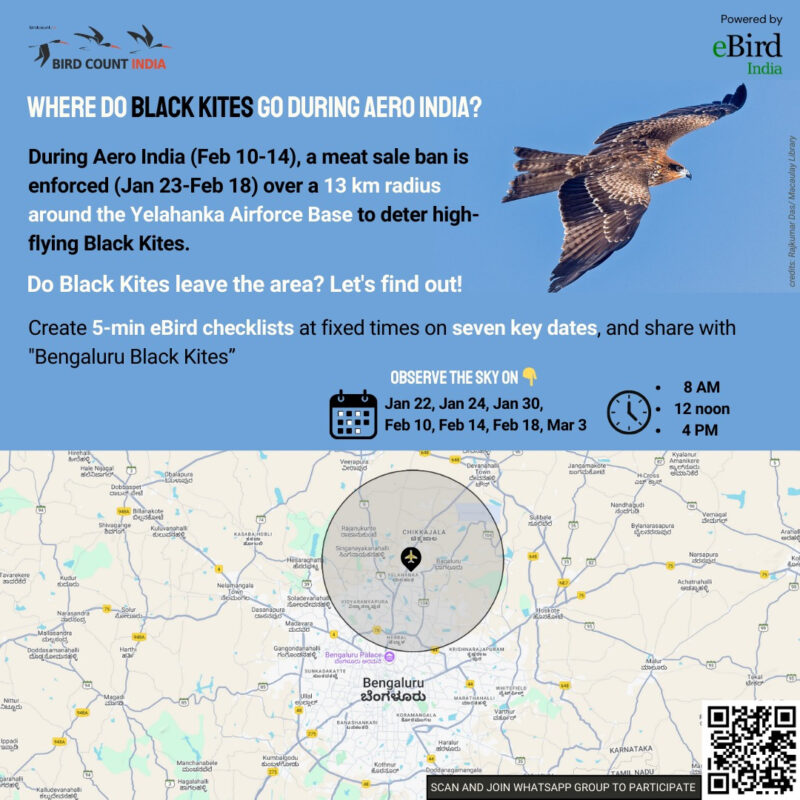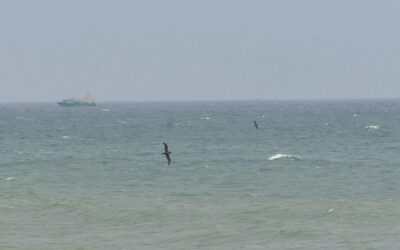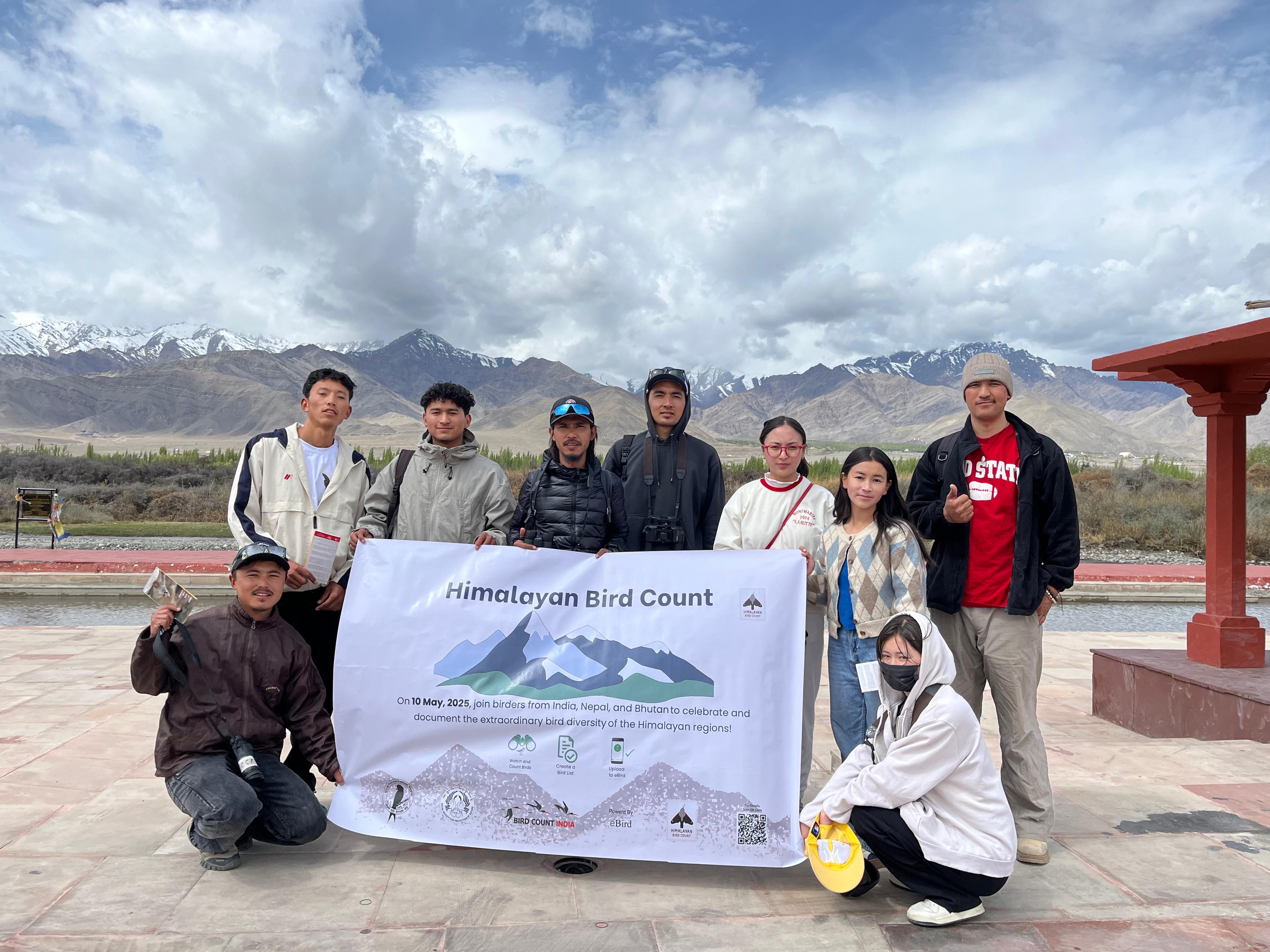Aero India is around the corner, and with that, the ban on selling meat within a 13 km radius for a few weeks, to keep away scavengers (mainly Black Kites) from the area and prevent bird strikes.
Does this meat ban have its desired effect? If so, where do the Black Kites from the region go?
Can we collectively do a small systematic study to understand how Black Kites in Bengaluru respond to the sudden lack of food?

We can monitor them on seven different occasions (the ban starts on 23 Jan 2025):
1) 22 Jan (just before the ban)
2) 24 Jan (just into the ban)
3) 30 Jan (1 week into the ban)
4) 10 Feb (First day of Aero India)
5) 14 Feb (Last day of Aero India)
6) 18 (Feb) just after the ban is lifted)
7) 3 Mar (2 weeks after the ban is lifted)
On each of these dates, wherever you are in Bengaluru:
- Focus on the sky and upload 5-minute Stationary and Complete eBird list at exactly 8 am, 12 noon and 4 pm
- Include counts of all birds seen in each checklist.
- Share each list with the eBird username “Bengaluru Black Kites”
- Do participate from anywhere in Bangalore! If you live within the ban radius, your participation is especially important. You are welcome to do the counts on other days as well. Click here to see whether your location falls within or outside the radius of the ban
To participate, join this WhatsApp group: https://chat.whatsapp.com/BdBZQiicWot5G5posmvi9s
If you have any further questions, email skimmer@birdcount.in
Header Image: Black Kite Milvus migrans by Dr Mohammed Umer Sharieff / Macaulay Library




